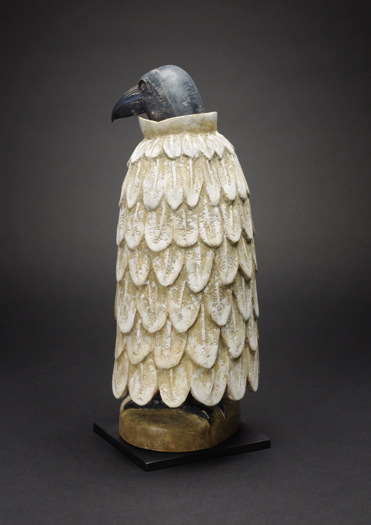Cloak of Shamelessness: Trickster Dreams of Becoming Creator
EXHIBITION:
Hib Sabin: The Stuff Dreams Are Made OfCloak of Shamelessness
Adapted from the oral storytelling of Hib Sabin.
In Northwest Coast mythology Raven is the ultimate trickster figure. Always getting into trouble and causing mayhem, he is a talker when he should be silent, a meddler when he should be still. Like all good trickster characters from myth, he knows no bounds and refuses to behave by anyone’s laws. In our human society, we are kept on the straight path by shame: it ensures that we remain in our places and do not become lawless, friendless, fearless. Raven, and tricksters like him, exist outside the boundaries of our society, and operate without the shame that keeps us in line. Raven is also a fool: he finds himself in trouble over and over, an agent of change and chaos. We speak of him in a sacred language, we see his actions through a lens of myth and moral and forgive his transgressions in the face of the lessons we learn from them.
But Raven is not simply a black-feathered trickster. Before he stole the Sun in his beak and dropped it into the sky, Raven was white-feathered: glorious, beautiful, a creator as well as a meddler. Raven’s pristine ivory feathers were stained black when he escaped through a smoky chimney with the Sun, and have remained dark ever since. He yearns still to be a creator, to be regarded as he was before his feathers were dirtied–to conceal his true nature once more. In this piece, Raven dons a cloak, hoping to trick us into seeing him as he once was, but he is betrayed by his black feet peeking out from under its hem. The feathered cloak illustrates Raven’s shameless attempt to trick us into believing he is still the same figure who once bore pristine feathers, but also represents what we all do each day: we present an idealized version of ourselves to the rest of the world. It speaks to the condition of humanity that we attempt to ascend and aspire beyond ourselves, to become better in every way, but that it takes change from within to effect change without.



